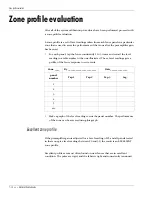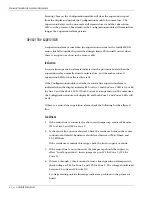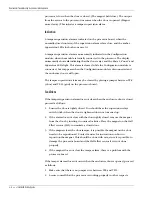
Maintenance/Troubleshooting - False/Nuisance alarm problems
a - 10 • • • Intelli-FLEX II product guide
False/Nuisance alarm problems
An alarm is considered a
False alarm
when the cause for the alarm cannot be
determined. When no cause can be determined, the alarm is considered to have
arisen due to a defect or failure in the alarm system.
An alarm is considered a
Nuisance alarm
when a cause for the alarm can be
determined. It may be an entirely proper sensor response to a stimulus on the
fence. It may also be caused by a sensor response to a stimulus on the fence that
should not cause an alarm.
False alarms can occasionally be traced to legitimate events that triggered the
alarm. For example, alarms in adjacent zones were traced to deer feeding near the
fence and occasionally bumping against it; and alarms were also traced to a hawk
that perched next to the fence and proceeded to bang its prey against the fence.
These examples illustrate that unexplained false alarms are often legitimate
nuisance alarms.
An alarm should be considered valid until it is proven to be invalid.
An excessive number of false or nuisance alarms can usually be traced to one or
more problem areas.
•
Noisy or intermittent connection in sensor cable
•
Poor fence condition
•
Attaching center conductor to shield at any splice point
•
Poor system grounding
•
Incorrect system setting and adjustment
Noisy or intermittent connection in sensor cable
One of the most common causes of false alarms, is a poor connection at a
junction or splice in the sensor or non-sensitive feed cable. Inspect the cable for
problems in this area. Often a cable that has a noisy connection will give a correct
resistance reading.
•
Wiggle the junction slightly while listening to the signal to see if the problem
is at the junction. The difference between the sound of the cable reacting to
some movement and the sound due to a loose connection is obvious.
















































